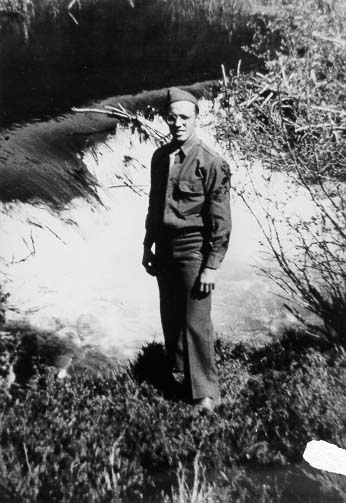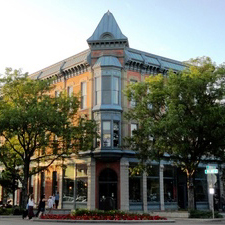I'd Never Seen a Mountain Before:
Setting up Camp Hale, Colorado, for the Tenth Mountain Division
I'd Never Seen a Mountain Before:
Setting up Camp Hale, Colorado, for the Tenth Mountain Division
Harold Kennedy
December 21, 1994
Interviewer: Rheba Massey
Despite having survived a ruptured appendix and being too nearsighted to be eligible for combat, Harold Kennedy was inducted into the army, trained at Fort Leonard Wood, and was soon part of a cadre of the quartermaster corps sent in September of 1942 to set up Camp Hale, near Leadville, Colorado. "I had never been in the mountains before. The highest hills I'd ever seen before were the Ozarks where Camp Leonard Wood is located."
After a long train ride, Kennedy got his first view of the mountains coming through the Royal Gorge. "We got out and everybody peered up at the sides of Royal Gorge. . . We went over the continental divide. I had never been up over 10,000 feet before." The camp was being developed at a little railroad siding called Pando. The camp was about one-fourth complete at that time and the quartermasters' job was to fill warehouses with the supplies that would be needed for the new Tenth Mountain Division. "Nothing inspired about it."
Having grown up in Minnesota and being an avid skater, Kennedy wasn't as bothered as some of the men by the cold temperatures but was impressed by the amount of snow - three or four feet on the level - and enjoyed climbing the mountainsides.
The barracks and other buildings were heated by coal burning furnaces. The camp was located in a deep valley and, as a result, the air was heavily polluted. "When the wind came, it was welcome." Kennedy believes the combination of altitude and pollution caused a large number of respiratory illnesses in the men stationed there. As one of the quartermaster corps jobs was to arrange shipment home of the coffins, Kennedy was aware of many deaths. "I don't think anything was ever written about that and I don't think any figures were ever furnished with the number of people who died up there because of the altitude. I think the air pollution played a good part of it."
Kennedy was not at Camp Hale long, for he made a top score on a test which qualified him to enter an Army Specialist Training Program (ASTP). He was to study the German language, history, demography and culture. In April of 1943, he was sent to Fort Collins and, like many others who first saw the town as part of their military training, was captivated by it.
Kennedy had a long career with the National Labor Relations Board and made his home in Cincinnati for 27 years, but his dream, born from his military service, was to return to Colorado and specifically to Fort Collins. He achieved this dream in 1975 when he retired. He and his wife took up skiing and found that Fort Collins had everything they wanted.


Preserving the history of Fort Collins, Colorado & the Cache la Poudre region






